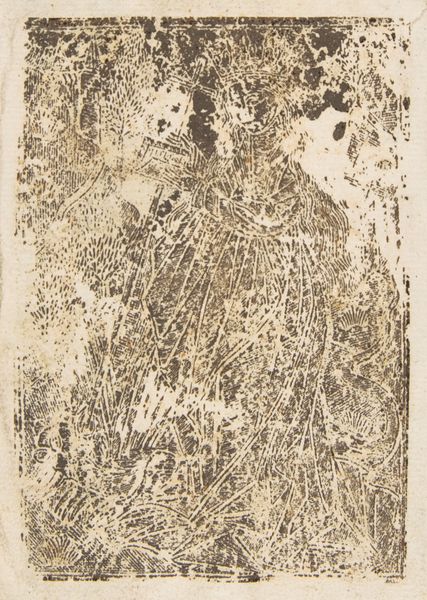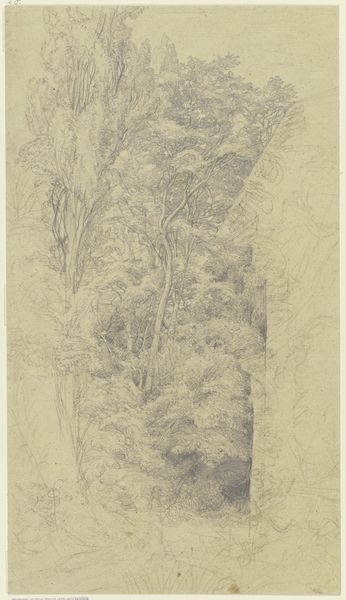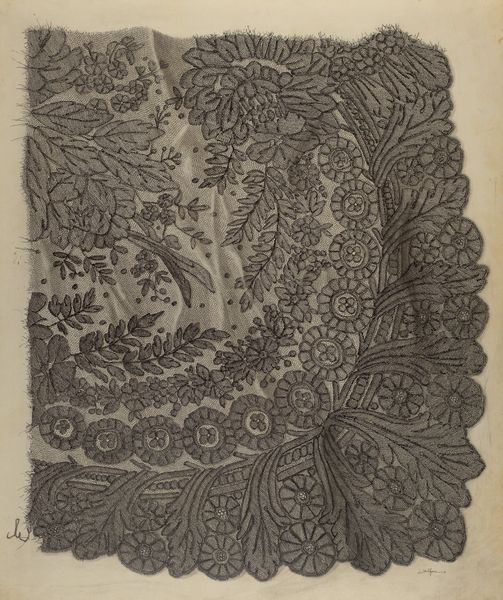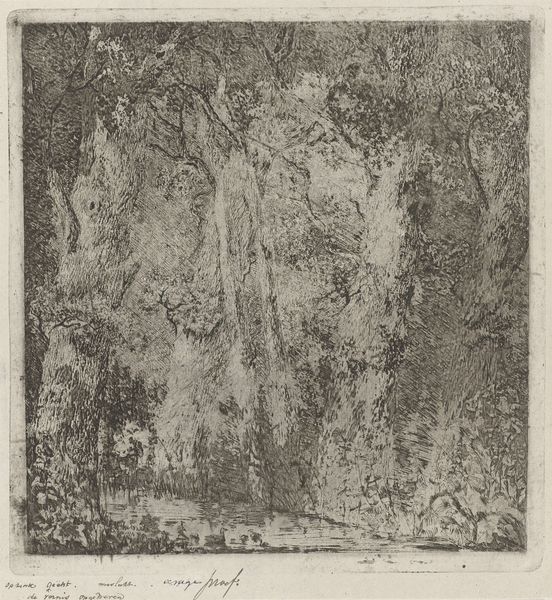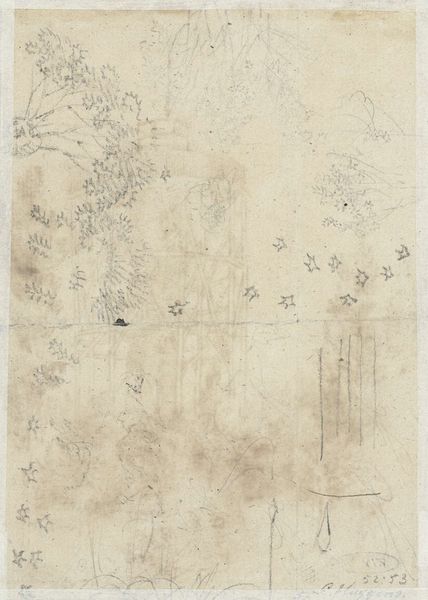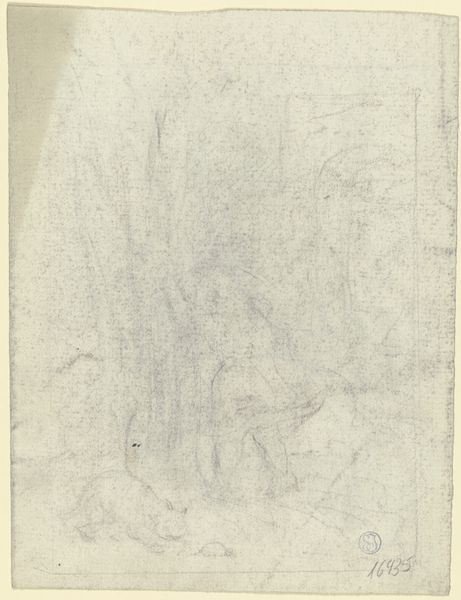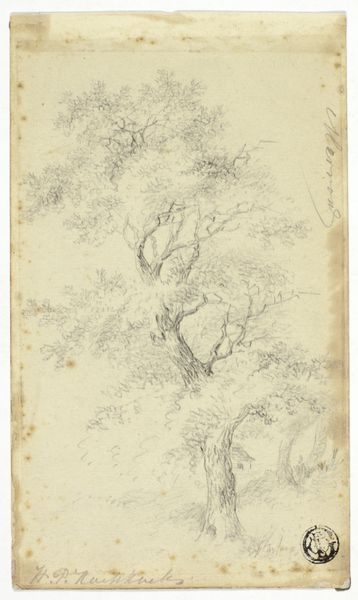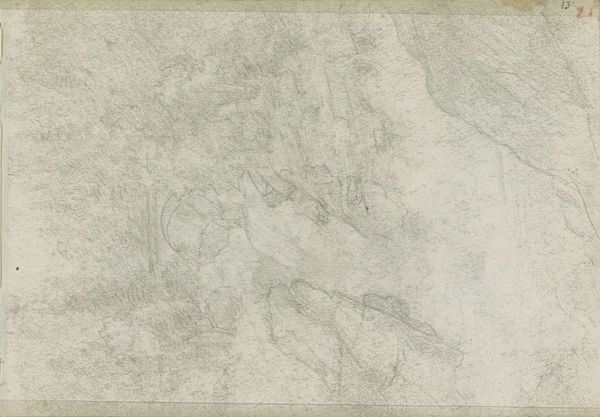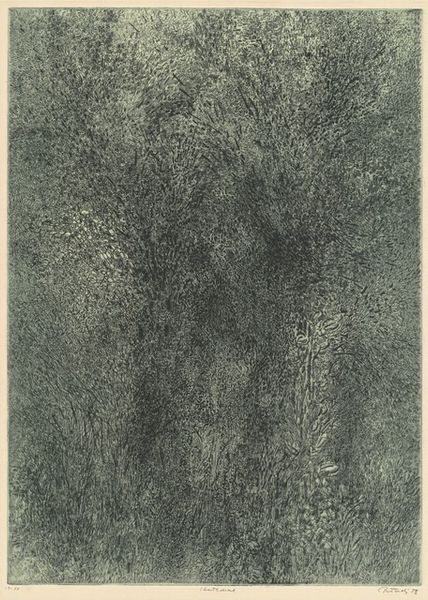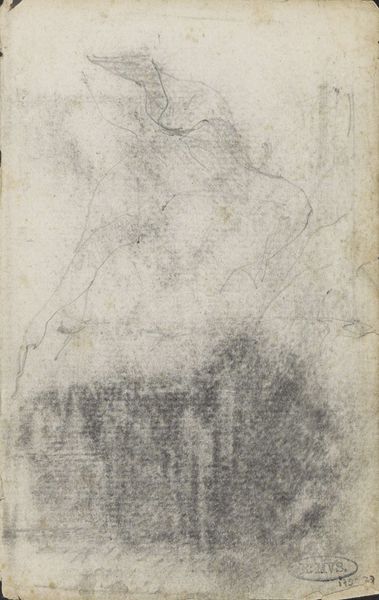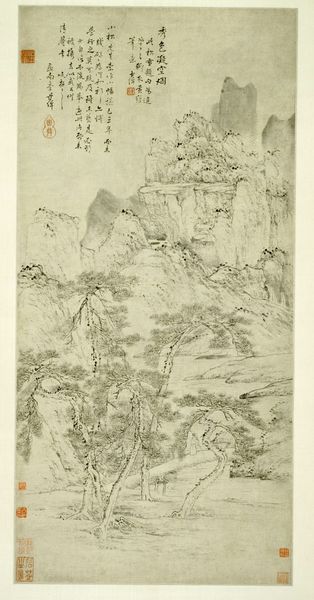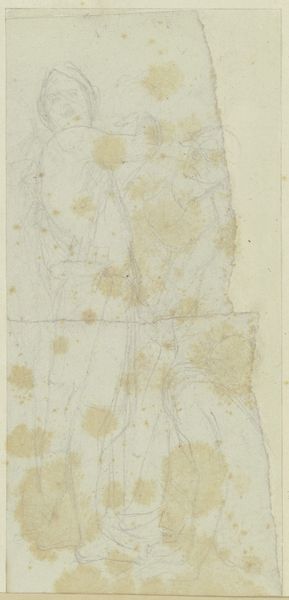
drawing, print, etching
#
drawing
# print
#
impressionism
#
etching
#
landscape
#
figuration
Copyright: Public Domain: Artvee
Editor: This is James Ensor's "Minnetuin," created in 1888. It's an etching, a kind of print, and at first glance, it's quite dreamlike. The scene is blurry and ethereal. What do you see in this piece that jumps out at you? Curator: It speaks of hidden meanings. While appearing to be a simple garden scene, Ensor subtly imbues it with potent symbols of memory and longing. Notice how the figures almost dissolve into the surrounding foliage. Editor: I see what you mean. They’re almost ghostly. Curator: Precisely! The garden itself is not just a location; it represents a shared cultural memory. The act of remembering transforms these figures into symbolic carriers of that past. Do you observe any elements that reinforce this theme of shared remembrance? Editor: Maybe the lack of individual details? They look like types, not individuals. Curator: An excellent observation. Ensor employs this visual language to connect individual experience to collective history. The figures' vagueness allows them to represent a spectrum of humanity through the passage of time. It emphasizes the enduring power of cultural memory embedded in landscapes and gatherings, suggesting cycles of renewal and remembrance. Editor: So it’s like they’re symbols *of* memory, not just figures *in* a memory? Curator: Exactly. This links back to earlier artistic traditions where landscapes were not merely scenic backdrops but potent symbols of mortality, paradise, or emotional states. Through their deliberate lack of individuality, Ensor suggests we consider not just *who* these people are, but *what* they represent. The shared garden transforms into a vessel of stories, lessons, and cultural continuity. Editor: I didn't expect so much meaning in such a simple drawing! I'll definitely look at Ensor differently now. Curator: Indeed. Recognizing how symbols connect us to the past gives us a greater appreciation for how our minds construct, preserve, and transform culture.
Comments
No comments
Be the first to comment and join the conversation on the ultimate creative platform.

